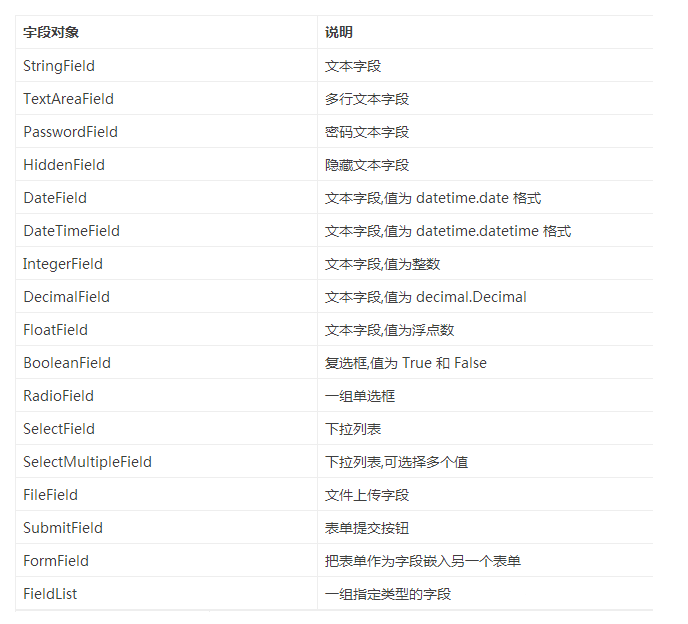您好,登錄后才能下訂單哦!
您好,登錄后才能下訂單哦!
本文實例講述了Python Flask框架模板操作。分享給大家供大家參考,具體如下:
模板
在前面的示例中,視圖函數的主要作用是生成請求的響應,這是最簡單的請求。實際上,視圖函數有兩個作用:處理業務邏輯和返回響應內容。在大型應用中,把業務邏輯和表現內容放在一起,會增加代碼的復雜度和維護成本。本節學到的模板,它的作用即是承擔視圖函數的另一個作用,即返回響應內容。 模板其實是一個包含響應文本的文件,其中用占位符(變量)表示動態部分,告訴模板引擎其具體值需要從使用的數據中獲取。使用真實值替換變量,再返回最終得到的字符串,這個過程稱為“渲染”。Flask使用Jinja2這個模板引擎來渲染模板。Jinja2能識別所有類型的變量,包括{}。 Jinja2模板引擎,Flask提供的render_template函數封裝了該模板引擎,render_template函數的第一個參數是模板的文件名,后面的參數都是鍵值對,表示模板中變量對應的真實值。
Jinja2官方文檔(http://docs.jinkan.org/docs/jinja2/)
我們先來認識下模板的基本語法:
{% if user %}
{{ user }}
{% else %}
hello!
<ul>
{% for index in indexs %}
<li> {{ index }} </li>
</ul>
通過修改一下前面的示例,來學習下模板的簡單使用:
@app.route('/')
def hello_itcast():
return render_template('index.html')
@app.route('/user/<name>')
def hello_user(name):
return render_template('index.html',name=name)
變量
在模板中{{ variable }}結構表示變量,是一種特殊的占位符,告訴模板引擎這個位置的值,從渲染模板時使用的數據中獲取;Jinja2除了能識別基本類型的變量,還能識別{};
<span>{{mydict['key']}}</span>
<br/>
<span>{{mylist[1]}}</span>
<br/>
<span>{{mylist[myvariable]}}</span>
from flask import Flask,render_template
app = Flask(__name__)
@app.route('/')
def index():
mydict = {'key':'silence is gold'}
mylist = ['Speech', 'is','silver']
myintvar = 0
return render_template('vars.html',
mydict=mydict,
mylist=mylist,
myintvar=myintvar
)
if __name__ == '__main__':
app.run(debug=True)
反向路由: Flask提供了url_for()輔助函數,可以使用程序URL映射中保存的信息生成URL;url_for()接收視圖函數名作為參數,返回對應的URL;
如調用url_for('index',_external=True)返回的是絕對地址,在下面這個示例中是http://localhost:5000/。
如調用url_for('index',name='apple',_external=True)返回的是:
http://localhost:5000/index/apple:
@app.route('/')
def hello_itcast():
return render_template('index.html')
@app.route('/user/<name>')
def hello_user(name):
return url_for('hello_itcast',_external=True)
自定義錯誤頁面:
from flask import Flask,render_template
@app.errorhandler(404)
def page_not_found(e):
return render_template('404.html'), 404
過濾器:
過濾器的本質就是函數。有時候我們不僅僅只是需要輸出變量的值,我們還需要修改變量的顯示,甚至格式化、運算等等,這就用到了過濾器。 過濾器的使用方式為:變量名 | 過濾器。 過濾器名寫在變量名后面,中間用 | 分隔。如:{{variable | capitalize}},這個過濾器的作用:把變量variable的值的首字母轉換為大寫,其他字母轉換為小寫。 其他常用過濾器如下:
safe:禁用轉義;
<p>{{ '<em>hello</em>' | safe }}</p>
capitalize:把變量值的首字母轉成大寫,其余字母轉小寫;
<p>{{ 'hello' | capitalize }}</p>
lower:把值轉成小寫;
<p>{{ 'HELLO' | lower }}</p>
upper:把值轉成大寫;
<p>{{ 'hello' | upper }}</p>
title:把值中的每個單詞的首字母都轉成大寫;
<p>{{ 'hello' | title }}</p>
trim:把值的首尾空格去掉;
<p>{{ ' hello world ' | trim }}</p>
reverse:字符串反轉;
<p>{{ 'olleh' | reverse }}</p>
format:格式化輸出;
<p>{{ '%s is %d' | format('name',17) }}</p>
striptags:渲染之前把值中所有的HTML標簽都刪掉;
<p>{{ '<em>hello</em>' | striptags }}</p>
語句塊過濾(不常用):
{% filter upper %}
this is a Flask Jinja2 introduction
{% endfilter %}
自定義過濾器:
通過Flask應用對象的add_template_filter方法,函數的第一個參數是過濾器函數,第二個參數是過濾器名稱。然后,在模板中就可以使用自定義的過濾器。
def filter_double_sort(ls): return ls[::2] app.add_template_filter(filter_double_sort,'double_2')
Web表單:
web表單是web應用程序的基本功能。
它是HTML頁面中負責數據采集的部件。表單有三個部分組成:表單標簽、表單域、表單按鈕。表單允許用戶輸入數據,負責HTML頁面數據采集,通過表單將用戶輸入的數據提交給服務器。
在Flask中,為了處理web表單,我們一般使用Flask-WTF擴展,它封裝了WTForms,并且它有驗證表單數據的功能。
WTForms支持的HTML標準字段

WTForms常用驗證函數

使用Flask-WTF需要配置參數SECRET_KEY。
CSRF_ENABLED是為了CSRF(跨站請求偽造)保護。 SECRET_KEY用來生成加密令牌,當CSRF激活的時候,該設置會根據設置的密匙生成加密令牌。
<form method='post'> <input type="text" name="username" placeholder='Username'> <input type="password" name="password" placeholder='password'> <input type="submit"> </form>
from flask import Flask,render_template
@app.route('/login',methods=['GET','POST'])
def login():
if request.method == 'POST':
username = request.form['username']
password = request.form['password']
print username,password
return render_template('login.html',method=request.method)
配置參數:
app.config['SECRET_KEY'] = 'silents is gold'
{{ form.username.label }}
{{ form.username() }}
{{ form.password.label }}
{{ form.password() }}
{{ form.submit() }}
我們通過登錄頁面來演示表單的使用。
#coding=utf-8
from flask import Flask,render_template,\
flash,redirect,url_for,session
#導入WTF擴展包的Form基類
from flask_wtf import Form
from wtforms.validators import DataRequired,EqualTo
from wtforms import StringField,PasswordField,SubmitField
app = Flask(__name__)
#設置secret_key,防止跨站請求攻擊
app.config['SECRET_KEY'] = '2017'
#自定義表單類,繼承Form
class Login(Form):
us = StringField(validators=[DataRequired()])
ps = PasswordField(validators=[DataRequired(),EqualTo('ps2','error')])
ps2 = PasswordField(validators=[DataRequired()])
submit = SubmitField()
#定義視圖函數,實例化自定義的表單類,
@app.route('/',methods=['GET','POST'])
def forms():
#實例化表單對象
form = Login()
if form.validate_on_submit():
#獲取表單數據
user = form.us.data
pswd = form.ps.data
pswd2 = form.ps2.data
print user,pswd,pswd2
session['name'] = form.us.data
flash(u'登陸成功')
return redirect(url_for('forms'))
else:
print form.validate_on_submit()
return render_template('forms.html',form=form)
if __name__ == "__main__":
app.run(debug=True)
控制語句
常用的幾種控制語句:
模板中的if控制語句
@app.route('/user')
def user():
user = 'dongGe'
return render_template('user.html',user=user)
<html>
<head>
{% if user %}
<title> hello {{user}} </title>
{% else %}
<title> welcome to flask </title>
{% endif %}
</head>
<body>
<h2>hello world</h2>
</body>
</html>
模板中的for循環語句
@app.route('/loop')
def loop():
fruit = ['apple','orange','pear','grape']
return render_template('loop.html',fruit=fruit)
<html>
<head>
{% if user %}
<title> hello {{user}} </title>
{% else %}
<title> welcome to flask </title>
{% endif %}
</head>
<body>
<h2>hello world</h2>
<ul>
{% for index in fruit %}
<li>{{ index }}</li>
{% endfor %}
</ul>
</body>
</html>
宏:
類似于python中的函數,宏的作用就是在模板中重復利用代碼,避免代碼冗余。
Jinja2支持宏,還可以導入宏,需要在多處重復使用的模板代碼片段可以寫入單獨的文件,再包含在所有模板中,以避免重復。
定義宏
{% macro input() %}
<input type="text"
name="username"
value=""
size="30"/>
{% endmacro %}
調用宏
{{ input()}}
#定義帶參數的宏
#調用宏,并傳遞參數
<input type="password"
name=""
value="name"
size="40"/>
模板繼承:
模板繼承是為了重用模板中的公共內容。{% block head %}標簽定義的元素可以在衍生模板中修改,extends指令聲明這個模板繼承自哪?父模板中定義的塊在子模板中被重新定義,在子模板中調用父模板的內容可以使用super()。
{% extends 'base.html' %}
{% block content %}
<h2> hi,{{ name }} </h2>
{% for index in fruit %}
<p> {{ index }} </p>
{% endfor %}
{% endblock %}
Flask中的特殊變量和方法:
在Flask中,有一些特殊的變量和方法是可以在模板文件中直接訪問的。
config 對象:
config 對象就是Flask的config對象,也就是 app.config 對象。
{{ config.SQLALCHEMY_DATABASE_URI }}
request 對象:
就是 Flask 中表示當前請求的 request 對象。
{{ request.url }}
url_for 方法:
url_for() 會返回傳入的路由函數對應的URL,所謂路由函數就是被 app.route() 路由裝飾器裝飾的函數。如果我們定義的路由函數是帶有參數的,則可以將這些參數作為命名參數傳入。
{{ url_for('index') }}
{{ url_for('post', post_id=1024) }}
get_flashed_messages方法:
返回之前在Flask中通過 flash() 傳入的信息列表。把字符串對象表示的消息加入到一個消息隊列中,然后通過調用 get_flashed_messages() 方法取出。
{% for message in get_flashed_messages() %}
{{ message }}
{% endfor %}
希望本文所述對大家基于flask框架的Python程序設計有所幫助。
免責聲明:本站發布的內容(圖片、視頻和文字)以原創、轉載和分享為主,文章觀點不代表本網站立場,如果涉及侵權請聯系站長郵箱:is@yisu.com進行舉報,并提供相關證據,一經查實,將立刻刪除涉嫌侵權內容。